By TREVOR HOGG
By TREVOR HOGG
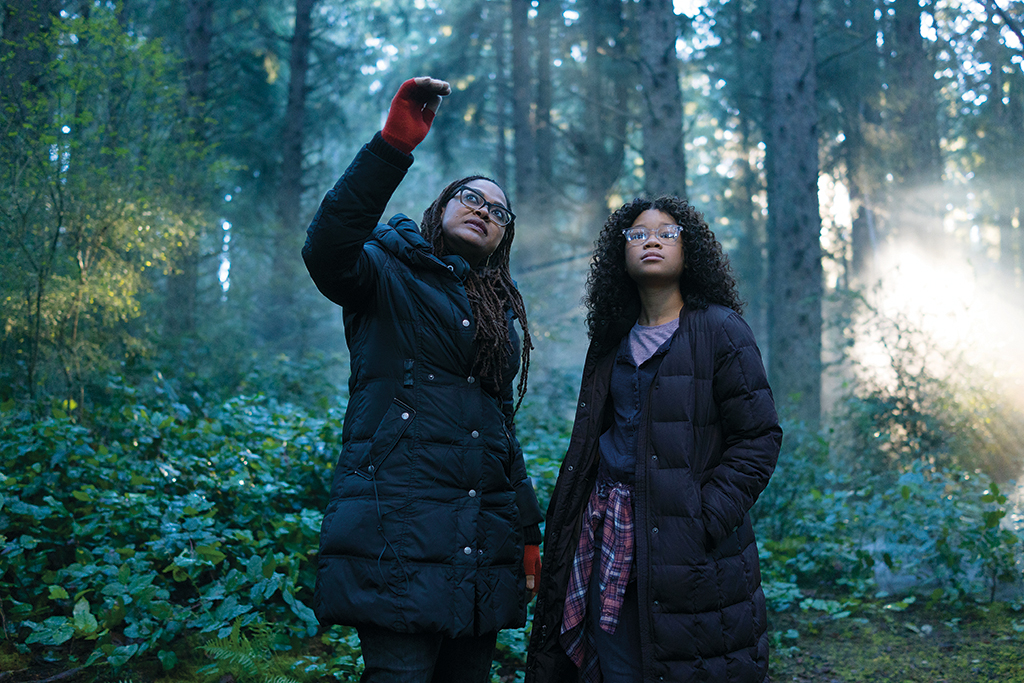
American filmmaker Ava DuVernay (Selma) was presented with an opportunity to produce a Hollywood blockbuster with the adaptation of A Wrinkle in Time. The young adult fantasy tale revolves around a 13-year-old girl traveling through time and space to rescue her imprisoned physicist-father from an expanding evil presence with help from her genius brother, a classmate and three celestial beings.
Budgeted at $103 million and featuring a cast that includes Oprah Winfrey, Reese Witherspoon, Mindy Kaling, Gugu Mbatha-Raw, Michael Peña, Storm Reid, Zach Galifianakis and Chris Pine, DuVernay was faced with having to deal with extensive visual and special effects for the first time. As a result, she hired Visual Effects Supervisor Rich McBride (The Revenant) to oversee the digital wizardry and Special Effects Supervisor Mark Hawker (Terminator Genisys) to guide the practical trickery.
“Directors say that they have a willingness to learn and understand the process. In Ava’s case she was honest in wanting to do so,” notes McBride. “I showed her all of the different pieces and components that go into a visual effects shot. You might have effects passes or animation that is greyshaded or wireframes.” DuVernay did have a limit when it came to learning about the intricacies. “When building creatures, you have to build the skeletal structure and the muscle systems. Ava was funny because she never wanted to know about the insides of the creatures!”
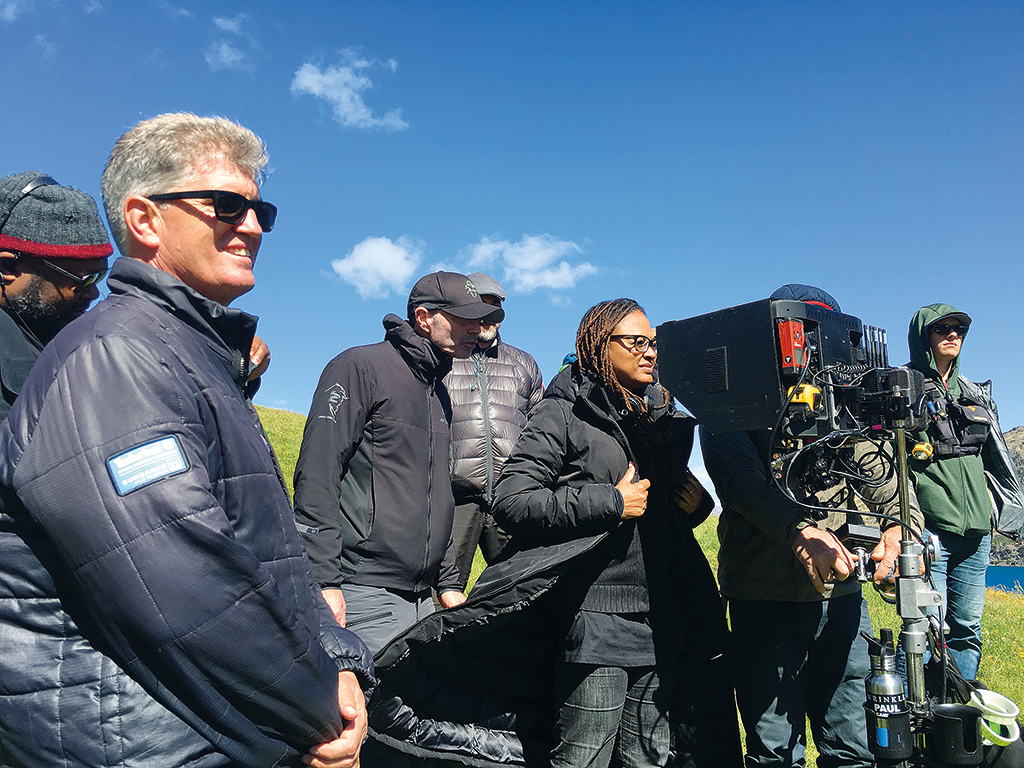
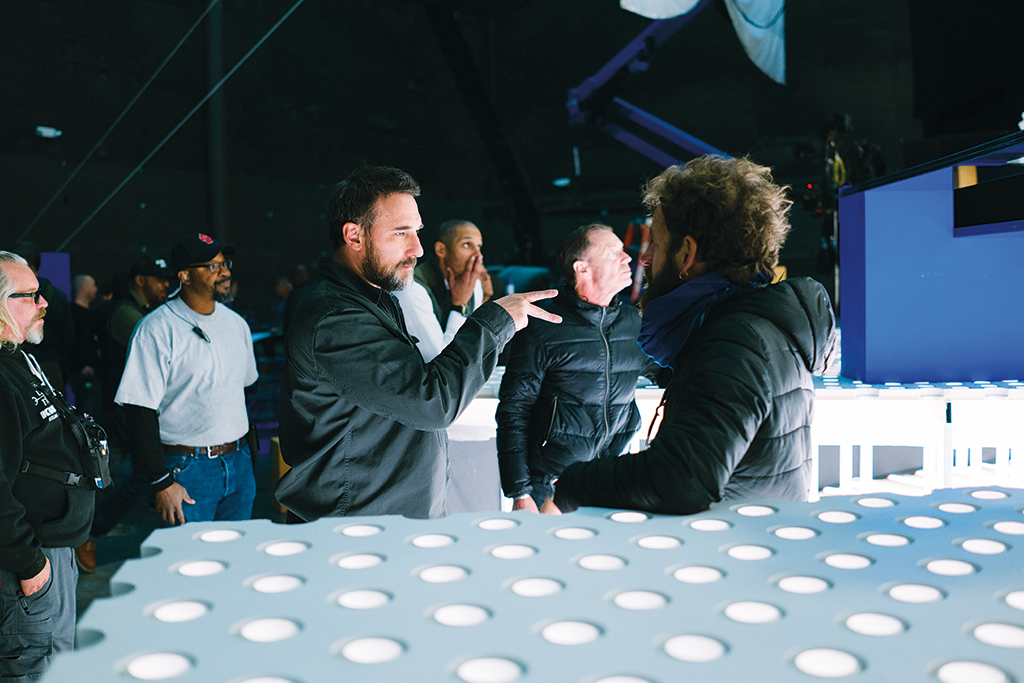
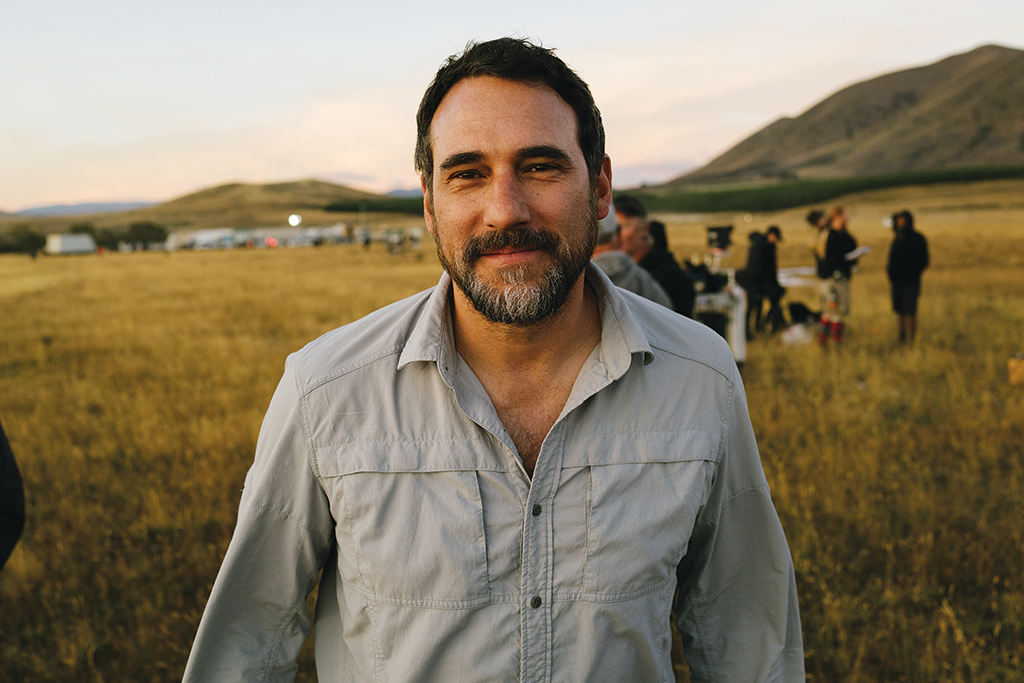
“During the post-production phase I was comfortable showing Ava work that was unfinished but was also in pieces. I’d say, ‘Don’t look at this but at the composition of the background. How do you feel about the movement of this particular aspect here?’ … I felt like I could put a lot more work in front of her than I would normally do with a director.”
—Rich McBride, Visual Effects Supervisor
McBride was brought early on into the process of rethinking the book authored by Madeleine L’Engle. “Ava and I have a good line of communication with one another that we’ve built up. During the post-production phase I was comfortable showing her work that was unfinished but was also in pieces. I’d say, ‘Don’t look at this but at the composition of the background. How do you feel about the movement of this particular aspect here?’ I could usually focus Ava fairly well, which was useful because I felt like I could put a lot more work in front of her than I would normally do with a director.”
A solid foundation of concept art was generated by the production art department led by Production Designer Naomi Shohan (The Lovely Bones). “There were definitely some things that came into the fantasy realm that we didn’t quite have any visual concepts for,” states McBride. “That usually fell to the vendor whether it was ILM or MPC or even using outside concept artists to say, ‘When Mrs. Which first comes into the backyard she is in what they described as a vaporous form.’ We went through a lot of iterations of concept art and used different effects passes to start build up on things. In some cases, we pulled things from our original concept work, like the design of our flowers on [fantasy planet] Uriel.”
Storyboards and previs were produced to get a better sense of what the action was going to be for some scenes. “Ava didn’t always adhere strictly to those. We covered a lot of the same action with multiple cameras – on average three sometimes four – which can be tricky for visual effects.”
“One of our worlds ended up being pieces of set with a lot of bluescreen around it,” reveals McBride. “But we did do extensive shooting in New Zealand for our exterior Uriel work. We ended up doing a lot of roto work so that Ava could get the takes that she wanted. Also, working with child actors often times you are restricted on the time of day and how long you’ve got with them so moving quickly and having to make quick calls on the day to say, ‘Don’t worry about putting the bluescreen up here. We’re going to manage without it.’ Those were things that we had to be flexible with.”
No major technology developments were needed to complete the shots. “We have heavy effects simulations. The creature work is straightforward Maya. Each of the vendors used their own proprietary packages for any of their animation and rendering. For the most part compositing was done across the board by using NUKE.”
A key element of the story is the ability of the characters to travel through a tesseract or wormhole to go from one world to the next. “We had definitely looked at Interstellar and what has been done in past movies as far as traveling through space and time,” remarks McBride. “That was our big challenge. Ava wanted something that wasn’t a space tube or porthole. It had to be somewhat grounded in the natural world yet looked magical. Our effect is that we’re almost distorting the world around them and rippling them with wave patterns that are distorting the physical world itself.”
Sine waves were a big influence. “The movement that we ended up going with had a more languid beautiful liquid light look.” Creatures had to be reimagined such as the Centaurlike being from the novel. “We were transforming one of the Missuses so we wanted it to be something of the world that they were in. We went with the idea that this was a lush planet, so we have a flying leaf creature.”
“For the monster on Camazotz we opted for something that was more about the environment coming after the kids,” remarks McBride. “We were using the idea of simulating the Earth, dust and a storm; all of these different natural elements coming together in a slightly natural but unnatural way. We’re trying to walk a fine line of it looking like something you’re familiar with but not behaving the way you would expect it to.”
Conveying size and scale was important. “It’s always a challenge in visual effects whenever we do massive size effects and simulations, especially when our only scale reference is a couple of our characters. Speed, detail and movement of things become a big part of it. But at the same time, shot to shot, you want the energy and excitement to be there. That’s the balance we play with all of the time – real-world physics versus what is the narrative of the shot.”
Complicating the ability to shoot the ‘land as monster’ sequence was the remote location and not being allowed to bring foreign matter such as soil and leaves into [the second location] Sequoia National Park. “We planned way ahead and talked to the maintenance people,” states SFX Supervisor Mark Hawker. “Whatever leaves that they had for us we went through to make sure that were no there sticks.”
At one point 20 fans ranging from heavy-duty 100-mph units to portable electrics were transported by small forklifts and backpacks. “The way that Ava wanted to shoot it was that the wind is chasing them. We had to bring the fans on when the kids are running and try to chase them with the wind.”
Rain was another critical element. “A river gets sucked up into this maelstrom. We took the 100-mph fans and put two-and-a-half-inch hose feeds in front of [the children] so that the water was being pushed horizontally.”
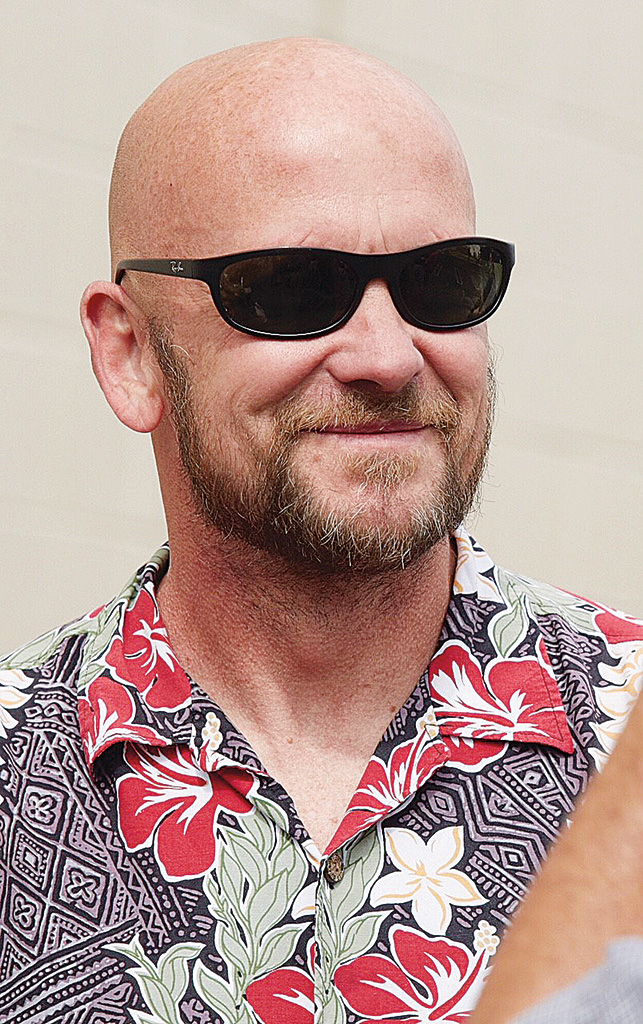
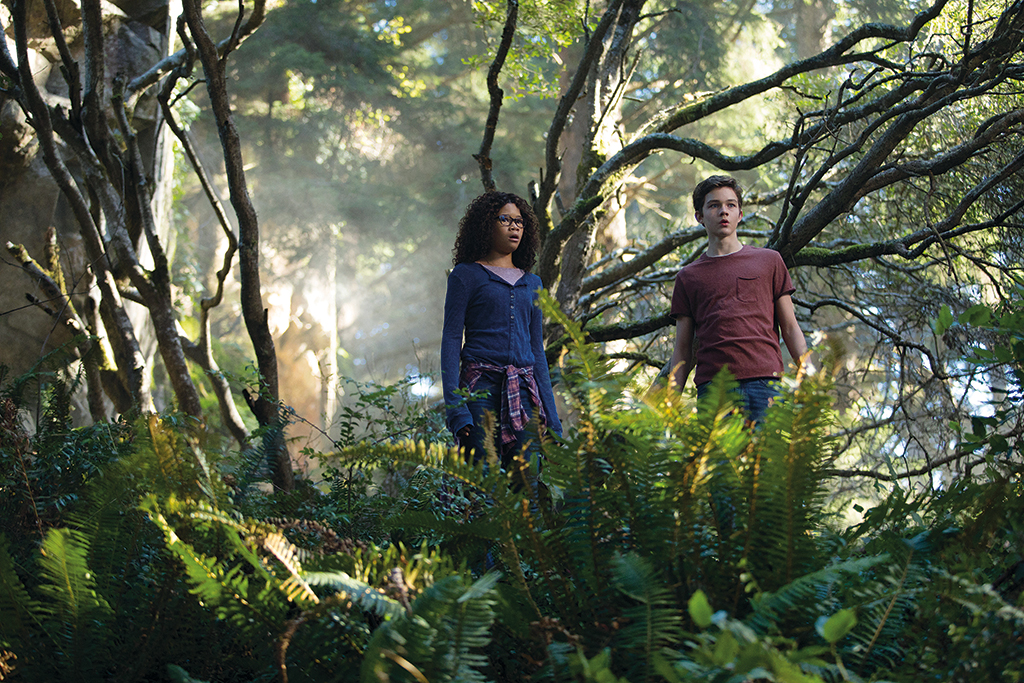
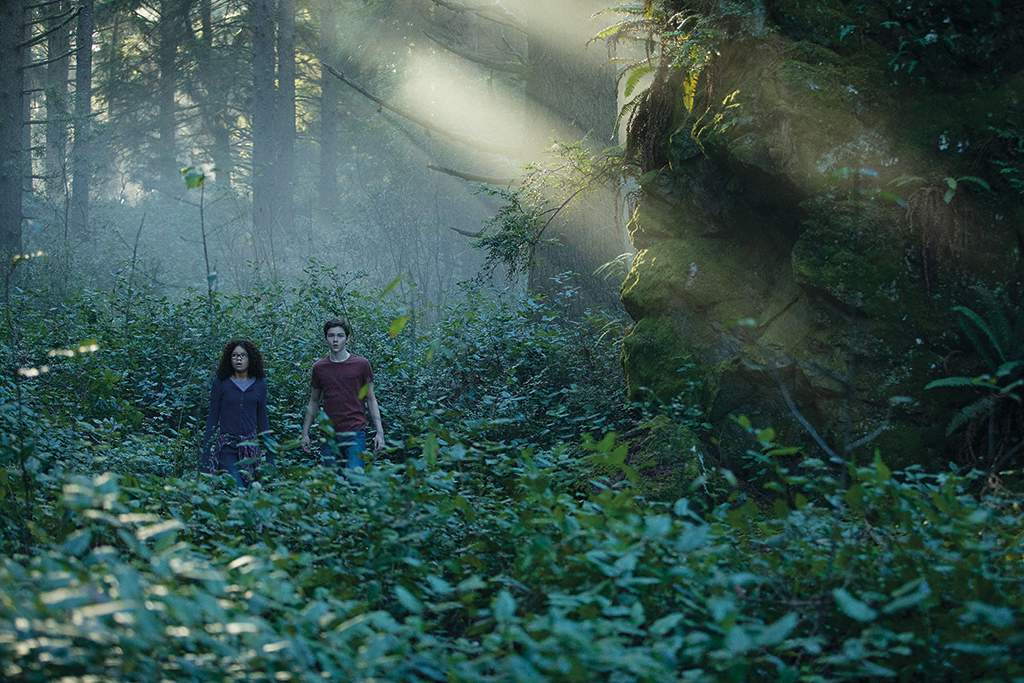
A trio of celestial beings known as Mrs. Whatsit (Reese Witherspoon), Mrs. Which (Oprah Winfrey) and Mrs. Who (Mindy Kaling) needed to be powerful but also relatable. “That’s always a challenge of the fantasy aspect,” observes McBride. “Ava’s aesthetic is that she likes to keep things subtle so a lot of times these characters feel like they are human. The only difference is that we’ve got Oprah Winfrey’s character who has trouble with her scale. Whenever Mrs. Which materializes she can’t always resolve herself at the right height. The first scene that you see her she’s 18 feet tall and then later on when they go to the first planet she’s about 35 feet tall. There are some little things in there that keep [the three characters] a little bit off. Not too much fantasy, but enough for you to feel like they are not human.”

“In my initial conversations with Ava, I said, ‘I would love to be able to plan this out.’ She would look at me and say, ‘Rich, I don’t know. I might change my mind on the day.’ It made me re-think how I could set this up in the way to give her the most flexibility, but still make sure that we were going to be covering ourselves and being able to accomplish what she wanted.”
—Rich McBride, Visual Effects Supervisor
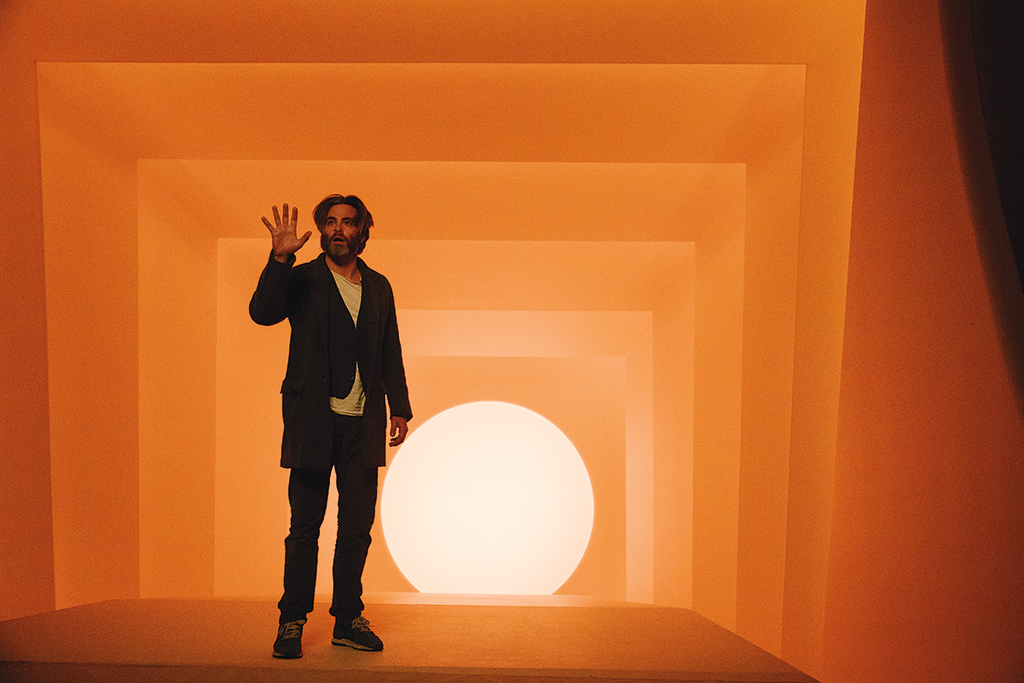
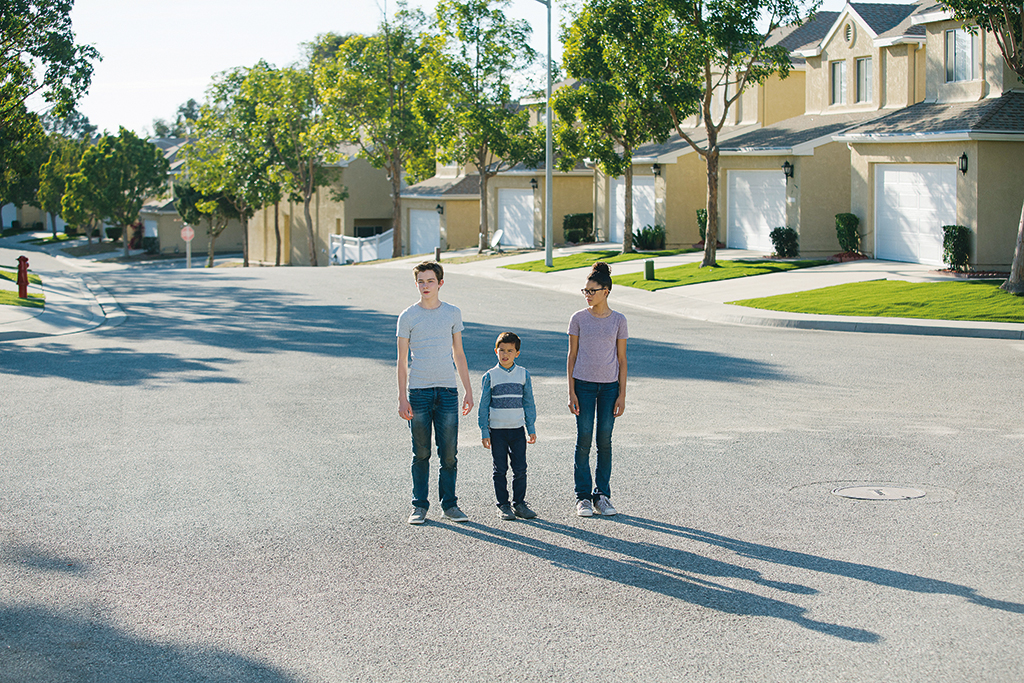
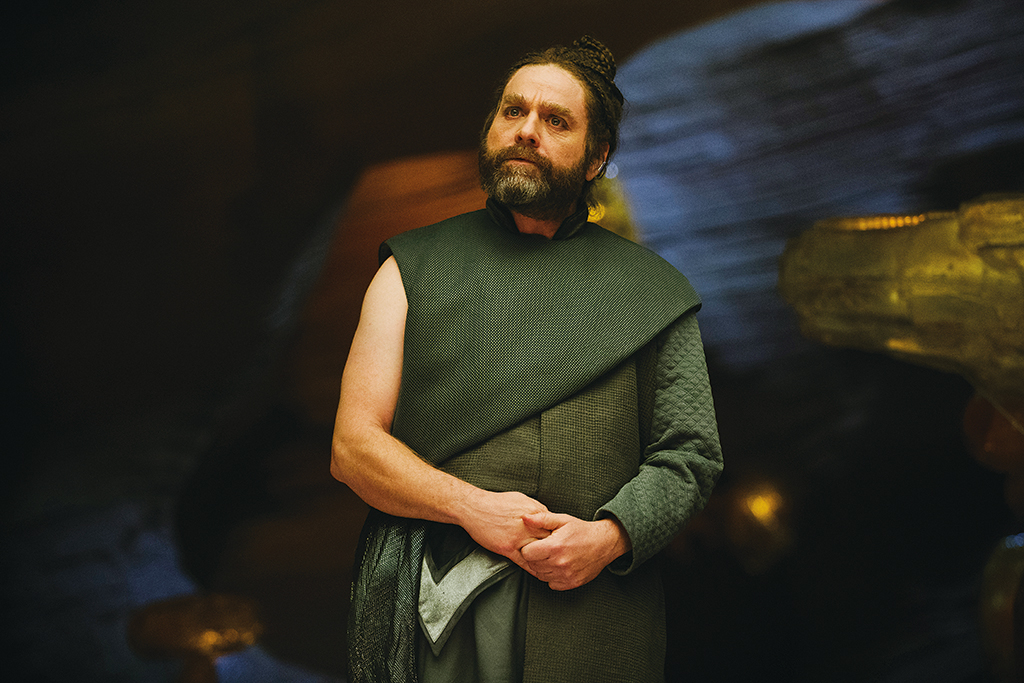
Extensive testing was required for the balancing chamber where the children have to walk across crystals that act like teeter-totters. “Ava was specific about the way it moved,” notes Hawker. “She wanted it to be smooth as they’re walking on crystals, but also needed for them to shake violently. It was like two different setups that we had to try to combine. We talked about doing motion control, but it ended up being an effects technician on each teeter-totter watching and doing it electronically.”
Element shoots were conducted, such as breaking 12-inch diameter tree trunks hydraulically. “The kids get chased towards the edge of this ravine and can’t proceed any further. Then a tree falls next to them and creates a bridge over this ravine. They start to go over the ravine, ‘land as monster’ starts pulling the tree down, it breaks, and the kids ride the tree down into the canyon. That was several rigs that we had to build.”
World building was required for the utopian setting of Uriel, the dark planet of Camazotz controlled by an evil entity referred to as IT, and the healing environment of Ixchel. “For Uriel, which was one of our biggest environment builds, we want it to feel otherworldly yet grounded and familiar,” states McBride. “That’s why we chose to shoot in New Zealand because it definitely has a landscape that feels like you’re somewhere else yet it is still on our Earth. We have since pushed the look of it going into post-production so that it feels more otherworldly and a bit more fantasy. It’s got more color and a bit more flower coverage. We’ve littered the landscape with giant poppies vegetation. There are whole ecosystems that live on these poppies with a big lake at the top of surrounding foothills. Ixchel ended up being a clean environment. It was meant to be a healing place. Ava wanted something simple so we created a clean ice plain. We have these beautiful ice structures which are something that we haven’t seen before. Camazotz was a mixed bag because it is a surreal place that is always changing. Camazotz is a place not to be trusted. It has many faces.”
Practical elements were needed for a gentle creature that lives on Ixchel. “When they do the leaps, Meg Murry [Storm Reid] is getting sick and there’s this big furry creature that helps to make her well again,” remarks Hawker. “Special effects built a rig to hold her in the position, and it was covered with fur because for Rich to do fur right up against Storm’s skin is an expensive thing. Two of my special effects technicians puppeteered the rig that was put on a bungee because it moves around, is breathing and had to do gentle moves. I’m sure the gentle creature is going to be beautiful when visual effects are finished with it.” Air cylinders were dug into the ground for the first time the children travel through space. “The kids would walk or stand on the air cylinders, and Rich blended them into the environment to create the impression that the surroundings are wrinkling.”
The color palette was manipulated during the DI process to heighten the sense of surrealism. “Uriel is quite colorful,” states McBride. “If you’re shooting over multiple days you get different weather especially in New Zealand where it changes from day to day. We’re using shadowing from the clouds and mountains to help blend shots together in the color grade.” In the book, Camazotz was always dark and ominous. “In ours, we’re not playing it the same way, so Camazotz is going to vary, but there are some scenes that are pulled right out of the book such as the suburbs with all of the kids and families.”
The suburban setting has the inhabitants of Camazotz appearing to be robotic in their mannerisms and behaviors. “It’s more the theme of control and conformity; that was the point of that scene. We had the kids performing that way, but we definitely did a lot of re-timing and manipulation of the plate to get that all aligned.”
“Rich definitely wanted as much input from us as he could. They want special effects to start the event and have visual effects take over so you always have something of realism in the shot to try to sell it to the audience.”
—Mark Hawker, SFX Supervisor
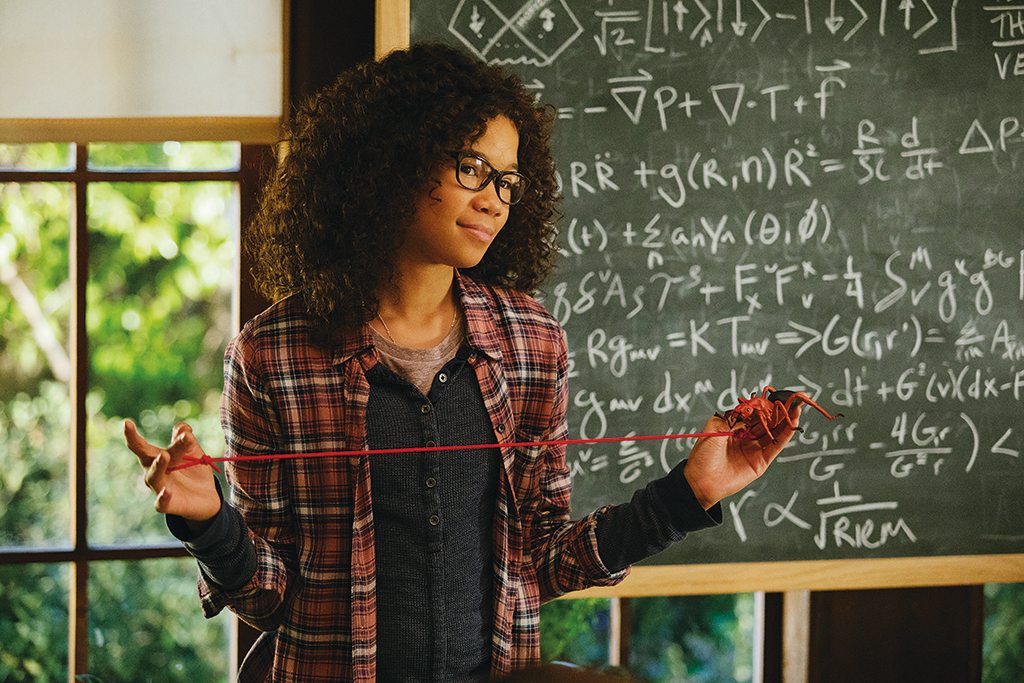
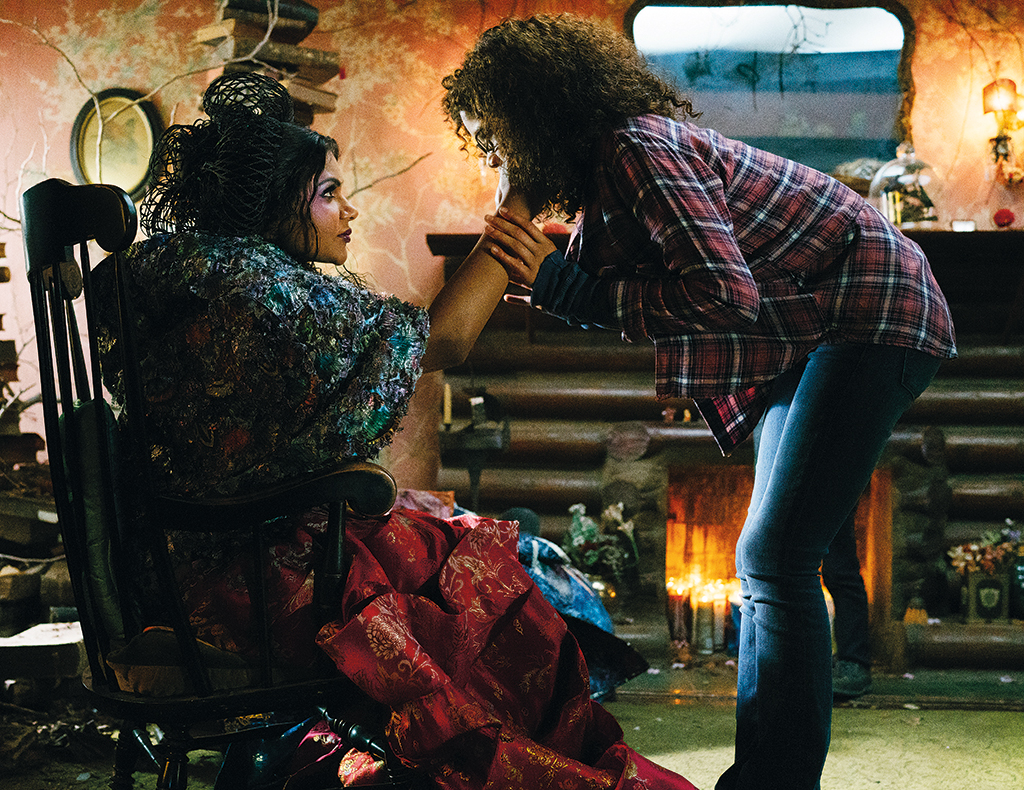

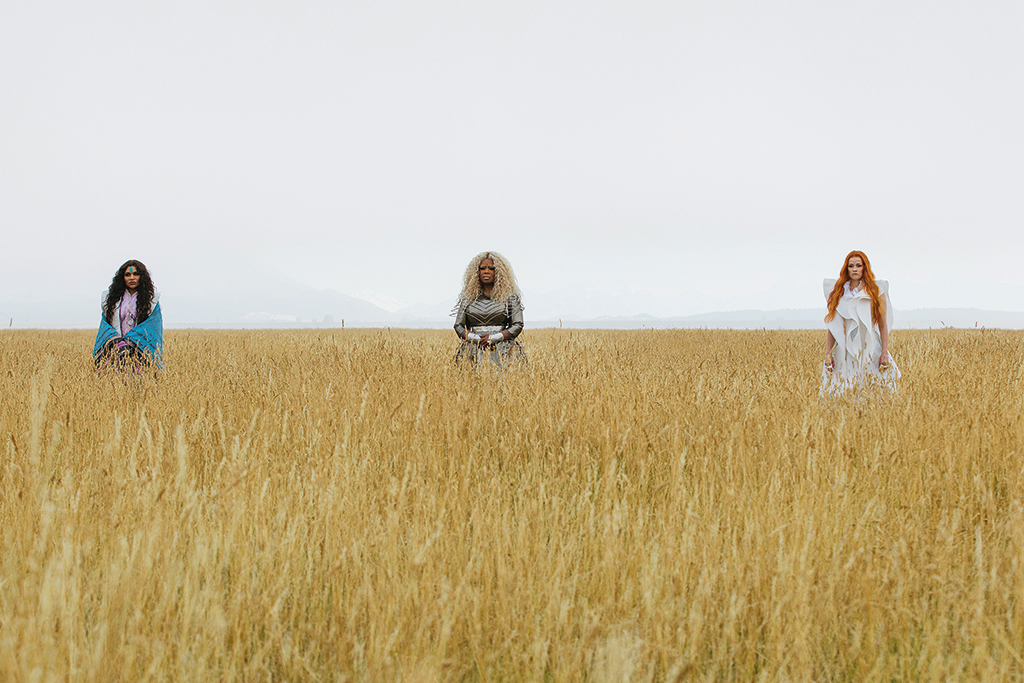
A number of characters appear in the different scenes which presented a challenge during the editing process. “There is a lot of coverage to deal with and choreography too,” notes McBride. “It’s tricky if we have to pull somebody out of the background of a shot or change the position of where they are in a scene.”
Digital doubles were used sparingly while only a couple of cases required face replacements. “We spent a lot of time thinking about the kids’ safety and comfort. There’s a scene where the kids are flying over Uriel with our creature. We wanted to put them into rigs that they were going to be having fun with.” The special effects team created and maneuvered a six-axis motion-base rig for the back of the creature which was a big foam platform that the children treated like a ride at Disneyland. “We had robotic arms from Robomoco programmed at long enough durations so that they could do multiple takes and even had flexibility with the cameras. It created more work for us on the back end as far as cleanup of the rigging, but it made the kids comfortable and enabled Ava to have the freedom to shoot the scene the way she wanted to.”
Not limiting the options for DuVernay was an overriding principle. “It’s created more work than I anticipated,” reveals McBride. “In my initial conversations with Ava, I said, ‘I would love to be able to plan this out.’ She would look at me and say, ‘Rich, I don’t know. I might change my mind on the day.’ It made me re-think how I could set this up in the way to give her the most flexibility, but still make sure that we were going to be covering ourselves and being able to accomplish what she wanted.”
Hawker enjoyed collaborating with the visual effects team. “I’ve been on shows where the visual effects supervisor is like, ‘We’ll do that.’ Rich definitely wanted as much input from us as he could get. They want special effects to start the event and have visual effects take over so you always have something of realism in the shot to try to sell it to the audience.”
MPC, ILM, Digital Domain, Luma Pictures, Rodeo FX and One of Us are responsible for producing 1,500 to 1,600 visual effects shots. For McBride, one moment stands out. “The kids flying over Uriel with the creature will be a lot of fun to see on the big screen.”
‘Land as monster’ stands out for Hawker. “I had 25 effects guys just for that sequence. That was challenging. I’m looking forward to seeing how our practical effects work with Rich’s visual effects and how it all ties together.”
A Wrinkle in Time has been a unique project for the filmmakers. “Ava has such a great handle on character and emotion,” observes McBride. “Normally, it would be about the technical aspects or composition or lighting. But in this case, I’m like, ‘How does that shot make you feel? How is that shot meant to make you feel?’ Those are the kinds of things that were often coming up in conversations. I call this the emotional visual effects show!”